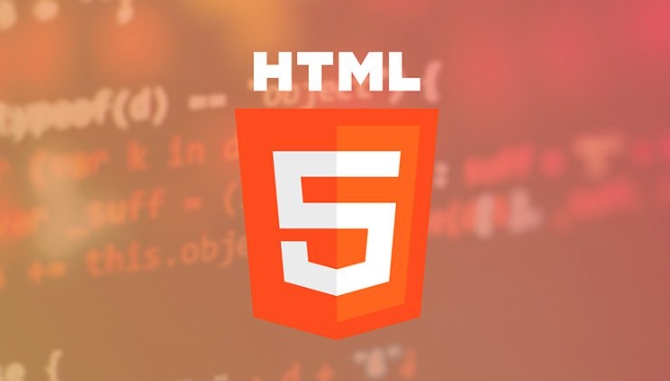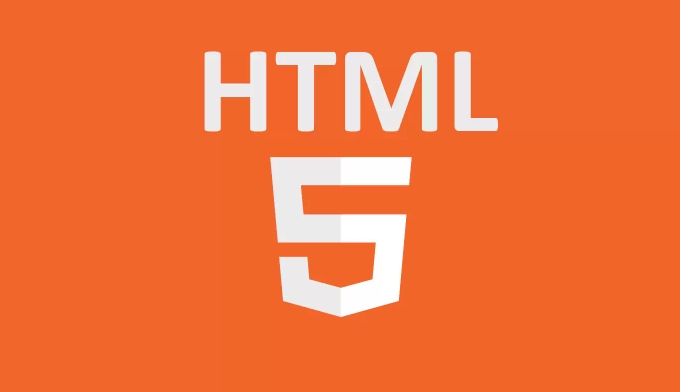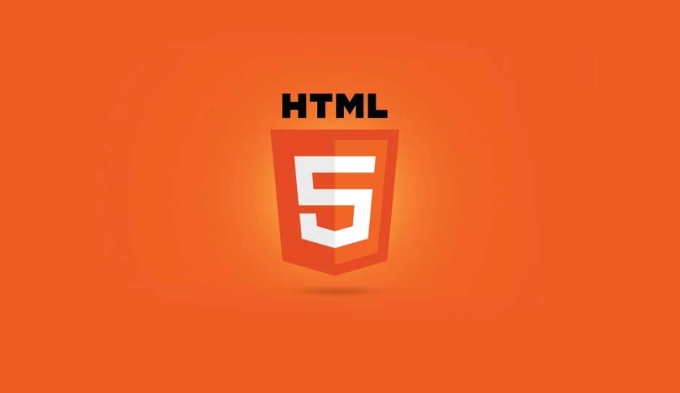Implementing full-screen mode for HTML5 elements.
Jul 02, 2025 pm 04:03 PMTo get HTML5 elements to enter full screen mode, you need to call the requestFullscreen() method and handle browser compatibility. 1. After obtaining the DOM element, call the prefixed requestFullscreen method to achieve full screen; 2. The full screen request must be triggered by user gestures, such as click events; 3. The full screen status can be judged through document.fullscreenElement and listened to full screenchange events; 4. To exit full screen, you can use document.exitFullscreen or the corresponding browser prefix method.

It is actually not complicated to let HTML5 elements enter full screen mode, but there are several key points that need to be paid attention to. Modern browsers support JavaScript's Fullscreen API, through this interface, you can control an element in the page to enter the full screen display state.

Common ways to request full screen
The core of implementing full-screen function is to call requestFullscreen() method. This method belongs to the Element interface, so you must first get a DOM element and then call it.

const element = document.getElementById('myElement'); element.requestFullscreen();
Different browsers may require prefixed versions, such as webkitRequestFullscreen (Safari) or mozRequestFullScreen (Firefox), so it is recommended to make a compatibility package in actual use:
function enterFullscreen(element) {
if (element.requestFullscreen) {
element.requestFullscreen();
} else if (element.webkitRequestFullscreen) {
element.webkitRequestFullscreen();
} else if (element.mozRequestFullScreen) {
element.mozRequestFullScreen();
} else if (element.msRequestFullscreen) {
element.msRequestFullscreen();
}
}The best time to trigger full-screen operation
For security and user experience considerations, browsers usually require full-screen requests to be triggered by user gestures, such as clicks, touches and other events. That is to say, requestFullscreen() cannot be automatically called after the page loads, otherwise an error will be thrown or blocked by the browser.

The correct way is to bind a button click event to trigger:
<button onclick="enterFullscreen(document.getElementById('myElement'))">Enter full screen</button>
If you try to execute a full screen request under asynchronous callbacks or non-user behavior, you may encounter a prompt like "fullscreen not allowed".
Determine whether it is currently in full screen
You can use document.fullscreenElement to determine whether there are currently elements in full screen. If null is returned, it means that no element is in full screen; if there is a value, it means that the element currently in full screen.
if (document.fullscreenElement) {
console.log('There is currently an element in full screen');
} else {
console.log('Not currently full screen');
}In addition, you can also listen for full-screen changes:
document.addEventListener('fullscreenchange', function () {
if (document.fullscreenElement) {
console.log('Enter full screen');
} else {
console.log('Exit full screen');
}
}); Don't forget to add browser prefixes such as webkitfullscreenchange or mozfullscreenchange .
Exit full screen way
In addition to pressing the ESC key to exit, you can also actively exit through the code:
document.exitFullscreen();
Similarly, browser compatibility needs to be considered:
if (document.exitFullscreen) {
document.exitFullscreen();
} else if (document.webkitExitFullscreen) {
document.webkitExitFullscreen();
} else if (document.mozCancelFullScreen) {
document.mozCancelFullScreen();
} else if (document.msExitFullscreen) {
document.msExitFullscreen();
}Basically that's it. After mastering these key points, you can flexibly control the full-screen behavior of HTML5 elements in the web page.
The above is the detailed content of Implementing full-screen mode for HTML5 elements.. For more information, please follow other related articles on the PHP Chinese website!

Hot AI Tools

Undress AI Tool
Undress images for free

Undresser.AI Undress
AI-powered app for creating realistic nude photos

AI Clothes Remover
Online AI tool for removing clothes from photos.

Clothoff.io
AI clothes remover

Video Face Swap
Swap faces in any video effortlessly with our completely free AI face swap tool!

Hot Article

Hot Tools

Notepad++7.3.1
Easy-to-use and free code editor

SublimeText3 Chinese version
Chinese version, very easy to use

Zend Studio 13.0.1
Powerful PHP integrated development environment

Dreamweaver CS6
Visual web development tools

SublimeText3 Mac version
God-level code editing software (SublimeText3)

Hot Topics
 Is H5 a Shorthand for HTML5? Exploring the Details
Apr 14, 2025 am 12:05 AM
Is H5 a Shorthand for HTML5? Exploring the Details
Apr 14, 2025 am 12:05 AM
H5 is not just the abbreviation of HTML5, it represents a wider modern web development technology ecosystem: 1. H5 includes HTML5, CSS3, JavaScript and related APIs and technologies; 2. It provides a richer, interactive and smooth user experience, and can run seamlessly on multiple devices; 3. Using the H5 technology stack, you can create responsive web pages and complex interactive functions.
 H5 and HTML5: Commonly Used Terms in Web Development
Apr 13, 2025 am 12:01 AM
H5 and HTML5: Commonly Used Terms in Web Development
Apr 13, 2025 am 12:01 AM
H5 and HTML5 refer to the same thing, namely HTML5. HTML5 is the fifth version of HTML, bringing new features such as semantic tags, multimedia support, canvas and graphics, offline storage and local storage, improving the expressiveness and interactivity of web pages.
 Understanding H5 Code: The Fundamentals of HTML5
Apr 17, 2025 am 12:08 AM
Understanding H5 Code: The Fundamentals of HTML5
Apr 17, 2025 am 12:08 AM
HTML5 is a key technology for building modern web pages, providing many new elements and features. 1. HTML5 introduces semantic elements such as, , etc., which enhances web page structure and SEO. 2. Support multimedia elements and embed media without plug-ins. 3. Forms enhance new input types and verification properties, simplifying the verification process. 4. Offer offline and local storage functions to improve web page performance and user experience.
 HTML5: The Building Blocks of the Modern Web (H5)
Apr 21, 2025 am 12:05 AM
HTML5: The Building Blocks of the Modern Web (H5)
Apr 21, 2025 am 12:05 AM
HTML5 is the latest version of the Hypertext Markup Language, standardized by W3C. HTML5 introduces new semantic tags, multimedia support and form enhancements, improving web structure, user experience and SEO effects. HTML5 introduces new semantic tags, such as, ,, etc., to make the web page structure clearer and the SEO effect better. HTML5 supports multimedia elements and no third-party plug-ins are required, improving user experience and loading speed. HTML5 enhances form functions and introduces new input types such as, etc., which improves user experience and form verification efficiency.
 HTML5 and H5: Understanding the Common Usage
Apr 22, 2025 am 12:01 AM
HTML5 and H5: Understanding the Common Usage
Apr 22, 2025 am 12:01 AM
There is no difference between HTML5 and H5, which is the abbreviation of HTML5. 1.HTML5 is the fifth version of HTML, which enhances the multimedia and interactive functions of web pages. 2.H5 is often used to refer to HTML5-based mobile web pages or applications, and is suitable for various mobile devices.
 HTML5: The Standard and its Impact on Web Development
Apr 27, 2025 am 12:12 AM
HTML5: The Standard and its Impact on Web Development
Apr 27, 2025 am 12:12 AM
The core features of HTML5 include semantic tags, multimedia support, offline storage and local storage, and form enhancement. 1. Semantic tags such as, etc. to improve code readability and SEO effect. 2. Simplify multimedia embedding with labels. 3. Offline storage and local storage such as ApplicationCache and LocalStorage support network-free operation and data storage. 4. Form enhancement introduces new input types and verification properties to simplify processing and verification.
 The Connection Between H5 and HTML5: Similarities and Differences
Apr 24, 2025 am 12:01 AM
The Connection Between H5 and HTML5: Similarities and Differences
Apr 24, 2025 am 12:01 AM
H5 and HTML5 are different concepts: HTML5 is a version of HTML, containing new elements and APIs; H5 is a mobile application development framework based on HTML5. HTML5 parses and renders code through the browser, while H5 applications need to run containers and interact with native code through JavaScript.
 Understanding H5: The Meaning and Significance
May 11, 2025 am 12:19 AM
Understanding H5: The Meaning and Significance
May 11, 2025 am 12:19 AM
H5 is HTML5, the fifth version of HTML. HTML5 improves the expressiveness and interactivity of web pages, introduces new features such as semantic tags, multimedia support, offline storage and Canvas drawing, and promotes the development of Web technology.






